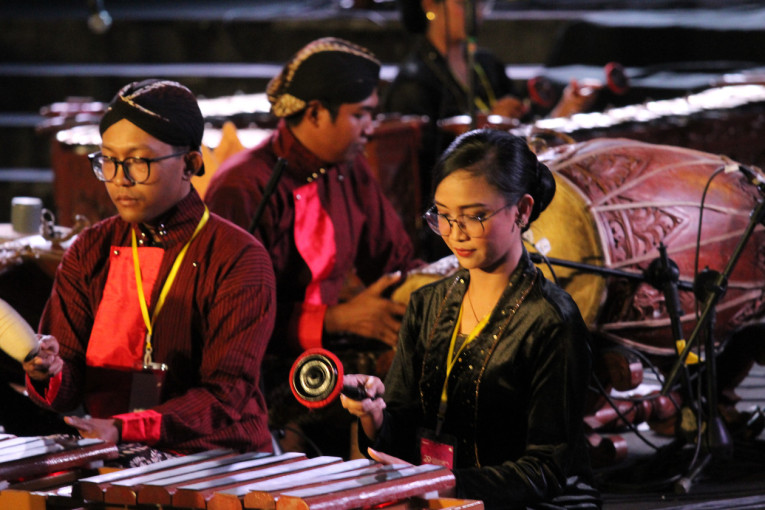
Plaza Pasar Ngasem was bustling on the evening of Thursday, Aug. 8, 2024, when the Yogyakarta Gamelan Festival opened.
Among the lively crowd were dozens of lecturers from the Department of Electrical Engineering and Information Engineering (DTETI), Faculty of Engineering, Universitas Gadjah Mada (FT UGM), who gathered to witness the performance of the electronic gamelan, Gameltron Evo.
At the festival’s opening, Gameltron Evo was played by the Gayam 16 Community, a gamelan arts development community based in the Kraton District of Yogyakarta.
This community is responsible for organizing the Yogyakarta Gamelan Festival 2024, an international annual event that brings together gamelan enthusiasts, players, and media to deeply engage in the world of gamelan art.
The Gameltron Evo was played by a total of 15 gamelan musicians under the direction of Ageng Purwo Ariyatno.
The performance included various compositions such as Ladrang Sri Slamet Laras Slendro Pathet Manyura; Ladrang Ayun-Ayun, Ketawang Ilir-Ilir, and Suwe Ora Jamu; Ladrang Pangkur, Sluku Bathok; and Lancaran Kuwi Apa Kuwi.
The head of the electronic gamelan research team, Addin Suwastono, explained that Gameltron Evo represents a significant innovation by simplifying the traditional gamelan’s structure.
Different musicians typically play traditional gamelan instruments like kendang, bonang, gambling, kempul, and gong.
However, with Gameltron—an initiative originally by the late Professor Adhi Susanto—all these instruments are integrated into a single technology equipped with sound sensors that replicate the original gamelan sounds.
The key difference lies in the materials used for Gameltron, which are lighter and more cost effective than traditional gamelan.
For instance, the gong is made from a lampshade and rattan, the saron is made from wood, and the pangkon (base) is constructed from iron. The bonang, on the other hand, is created using 3D printing.
Adjacent to the gamelan instruments is a “gunungan,” which serves as the sound module. From here, the sounds are manipulated to replicate the stored traditional gamelan sounds.
The musicians play the physical gamelan instruments as controllers or triggers. Additionally, speaker amplifiers enhance and amplify the sound signals from the sound module, ensuring the sounds are audible.
Suwastono emphasized that the similarity in how Gameltron is played helps bring gamelan closer to the public. He noted that Gameltron Evo is designed for practicality.
“The development of Gameltron allows us to play gamelan with earphones in our rooms,” Suwastono remarked.
This continuously evolving electronic gamelan innovation serves as a form of cultural preservation.
From the initial Gameltron in the 1970s to Gameltron Evo in 2023, this progression demonstrates the unwavering efforts of FT UGM lecturers to synergize technology with tradition, creating something new without losing cultural roots.
This electronic gamelan project by the research team bridges traditional and modern culture, reinforcing gamelan’s position in Indonesia’s musical landscape.
Author: FT UGM/Rasya Swarnasta
Editor: Gusti Grehenson
Photo: Yogyakarta Gamelan Festival

